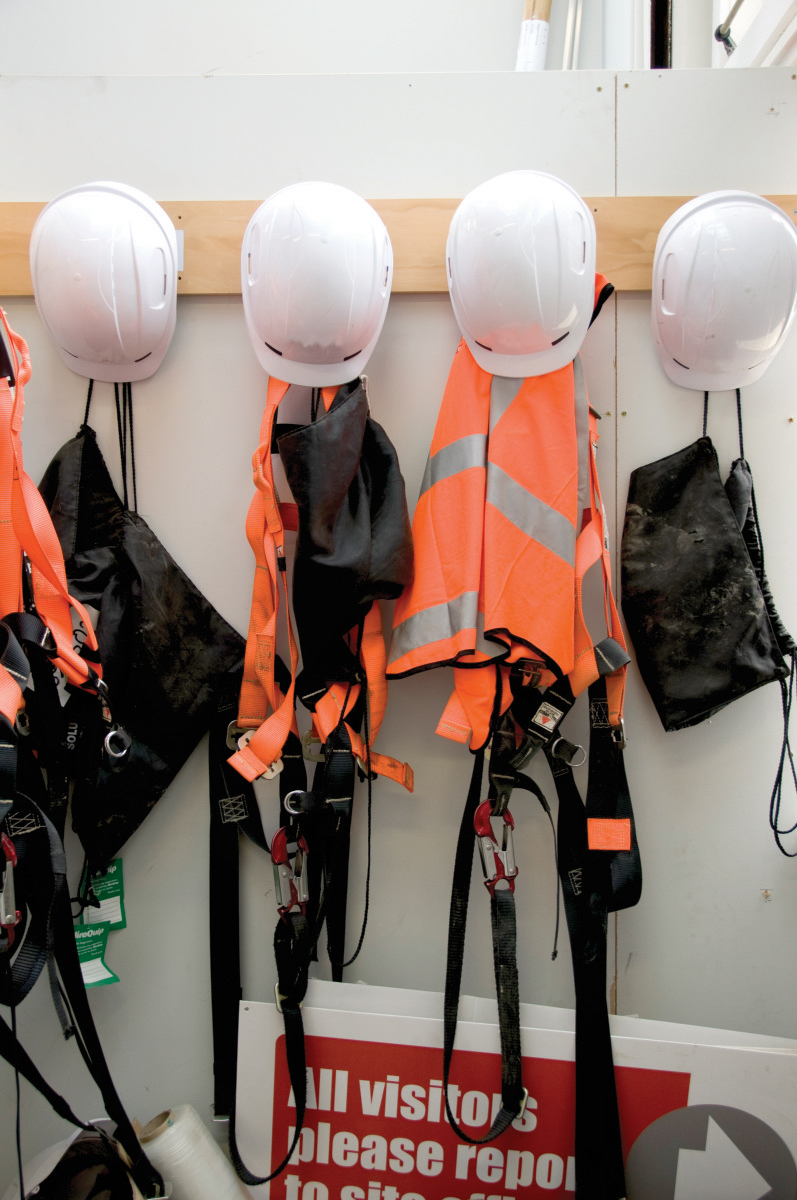Managing the mould menace
01 Jun 2013, Building and housing, Prove Your Know How, Safety

This sixth article in a series based on weathertight remediation workshops run by the Ministry of Business, Innovation and Employment (MBIE) – Building and Housing Group focuses on health and safety.
Due to the nature of remediation work, some hazards are elevated from those encountered on ‘regular’ projects, including those that might not be taken into consideration when first getting into this line of work.
The damp conditions and decaying materials present in many leaky buildings create an ideal environment for moulds and fungi to flourish. There are hundreds of such moulds and many are relatively harmless. However, unless you’ve had the mould identified by a laboratory, it’s best to assume all moulds are potentially harmful and to take precautions.
One of the most prevalent and common varieties associated with adverse health effects is stachybotrys (stacci).
Chronic exposure to toxins produced by this fungus can result in cold and flu symptoms, memory loss, muscle aches, sore throats, diarrohea, headaches, fatigue, dermatitis, intermittent local hair loss, cancer and general feelings of unwellness. It has also been reported that the toxins can suppress and even destroy the immune system, affecting the lymphoid tissue and the bone marrow.
Eye-popping stuff! So what does that mean for the building occupants, those visiting the site and site staff? It’s not just an immediate hazard, there are longer-term implications, too.
It is the spores of this mould that are the most toxic, as they can contain chemicals called mycotoxins. Ingesting or inhaling these spores is when it’s at its most hazardous. Stacci typically grows on products containing cellulose, such as the paper on plasterboard lining and wood fibre-reinforced cement products in the presence of water. When this mould is damp, it is relatively inert, but when it dries out, spores become airborne and more hazardous. They can also contaminate other areas of the site.
Five steps to deal with stacci
1. Identify – It looks like a green/black soot. Get expert advice to be sure.
2. Isolate – Dampen the area, and keep moist.
3. Document – For health and safety, variation claim and evidence reasons.
4. Remove – Get rid of the contaminated material and/or use bleach solution only if appropriate. Contain to prevent spread of contaminants.
5. Dispose – Allowing contaminated materials to dry out could be hazardous; wrap in polythene and seal.
PPE procedure
It’s important to ensure you and your employees are wearing the appropriate PPE gear, such as disposable suits, gloves, masks and goggles. But is it good enough just to supply it?
It’s possible to cross-contaminate other equipment while disrobing PPE, so it’s important to establish a procedure to prevent this happening and also decide what can be re-used or not.
A well-ventilated area should be set up for disrobing, with washing facilities for workers and their PPE.
It’s not just workers who are exposed to stacci and other hazards on site. There could be many more visitors than on a new build. For example, lawyers and experts for both sides of a legal dispute, designers and the council staff will probably be on site more often.
Protecting occupants
Occupants living in the building require careful H&S consideration, especially on tenanted multi-unit sites. How can a builder implement H&S policy in reality when fire egress paths, emergency lighting, fire-rated linings and decks are going to be impacted during works? Make sure the cosof keeping them safe 24/7 been allowed for in the contract.
Other hazards heightened on such projects require consideration. One of these is tarpaulin-affected scaffolding, which should not be lifted in dangerously strong winds. Dust is another, especially from cutting plaster cladding; this can be minimised by using dust extraction equipment on cutting gear.
While additional H&S risks potentially exist on these types of projects, they can be easily managed with planning and knowledge.
Suggested follow up areas for more information
• Building and Housing website: www.dbh.govt.nz/ws-info-for-building-professionals
• Building and Housing publications
– Guide to Remediation Design
– Guide to the Diagnosis of Leaky Buildings
– Dealing with Timber in Leaky Buildings
– OSH Bulletin 17
– ACC Think Safety First kit
– BRANZ February 2013 Guideline: Biocontaminant exposure when remediating leaky buildings
About the author
Harry Dillon has been involved with the repair of more than 300 homes as a builder over the last ten years.This article represents Harry’s views, which may not necessarily be the same as those of MBIE.
Register to earn LBP Points Sign in



